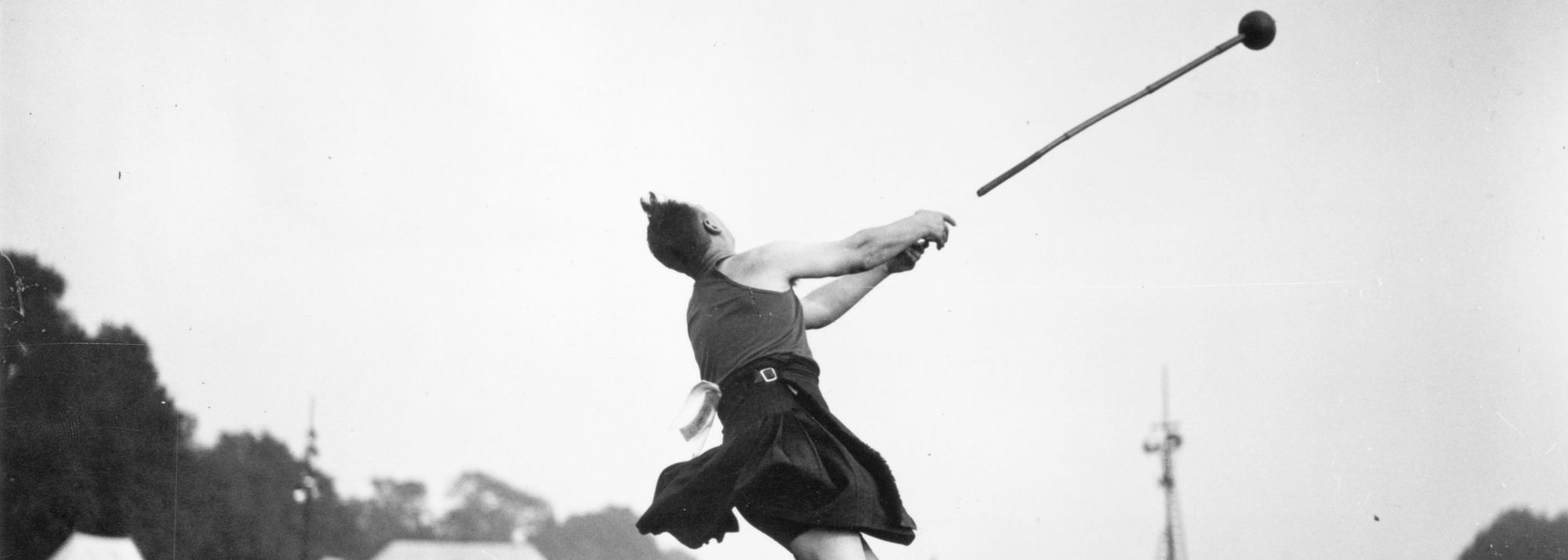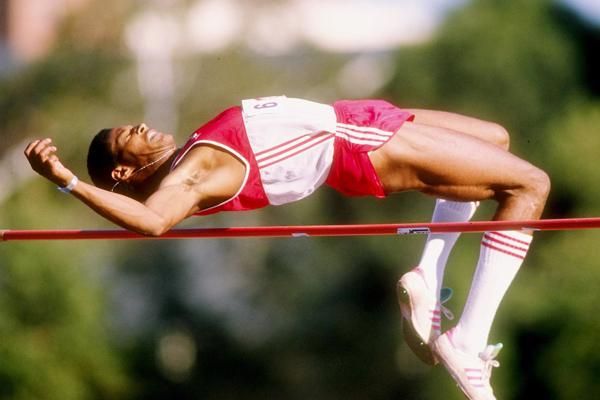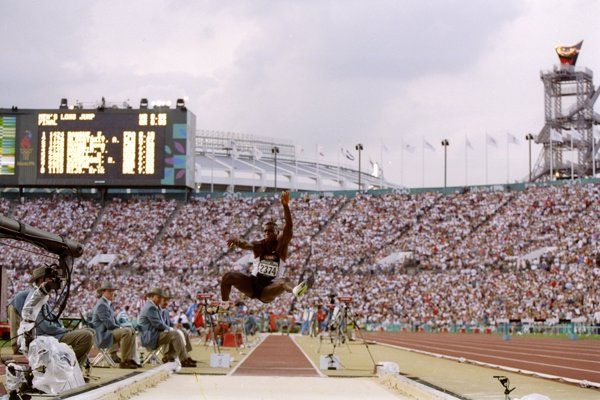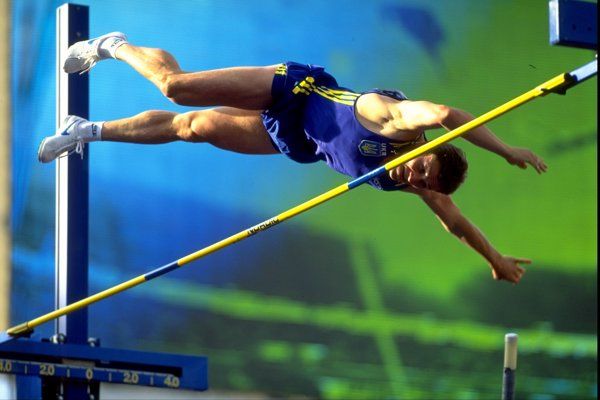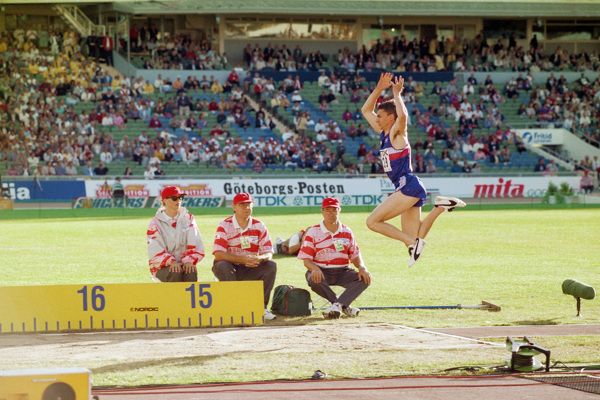Highland Games 1937 in London, D Smith throwing the hammer. (© Hudson/Topical Press Agency/Getty Images)
How it works
Another of the throws events, athletes throw a metal ball (7.26kg/16lb for men, 4kg/8.8lb for women) that is attached to a grip by a steel wire no longer than 1.22m while remaining inside a 2.135m (seven-foot) diameter circle.
In order for the throw to be measured, the ball must land inside a marked 35-degree sector and the athlete must not leave the circle before it has landed, and then only from the rear half of the circle.
The thrower usually makes three or four spins before releasing the ball. Athletes will commonly throw six times per competition. In the event of a tie, the winner will be the athlete with the next-best effort.
Quality hammer throwers require speed, strength, explosive power and co-ordination. At major championships the format is typically a qualification session followed by a final.
History
Legend traces the concept of the hammer throw to approximately 2000BC and the Tailteann Games in Tara, Ireland, where the Celtic warrior Culchulainn gripped a chariot wheel by its axle, whirled it around his head and threw it a huge distance.
The wheel was later replaced by a boulder attached to a wooden handle and the use of a sledgehammer is considered to have originated in England and Scotland during the Middle Ages. A 16th century drawing shows the English king Henry VIII throwing a blacksmith’s hammer.
The hammer was first contested by men at the 1900 Olympic Games in Paris. Women first contested the hammer at the Olympics some 100 years later at the Sydney Games. Hungary has a strong tradition in the men’s hammer and has won gold medals at the 1948, 1952, 1968, 1996 and 2012 Games. Poland has been the dominant force in women’s hammer, winning Olympic titles in 2000, 2012 and 2016.
Related links:









